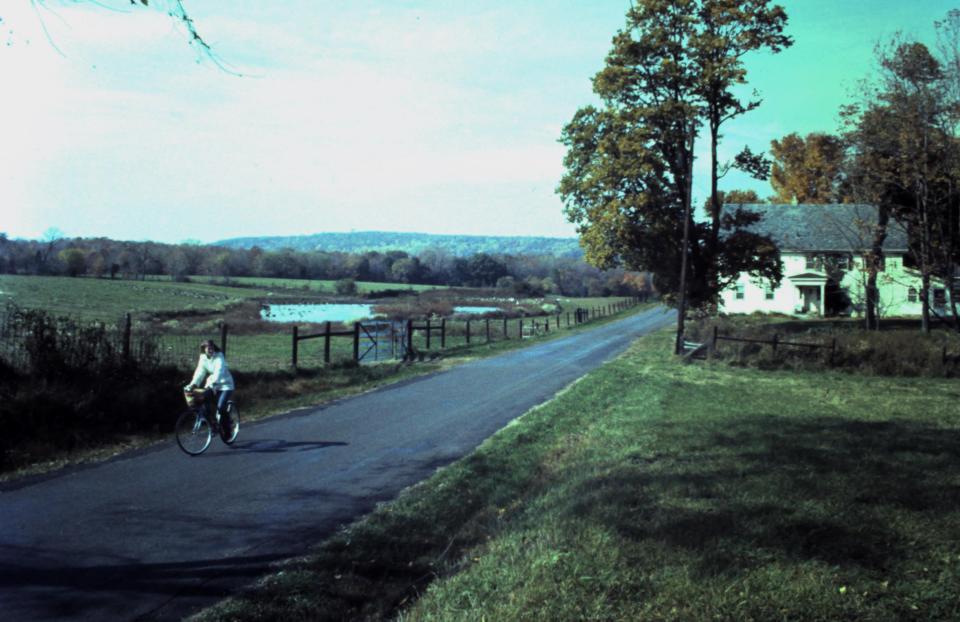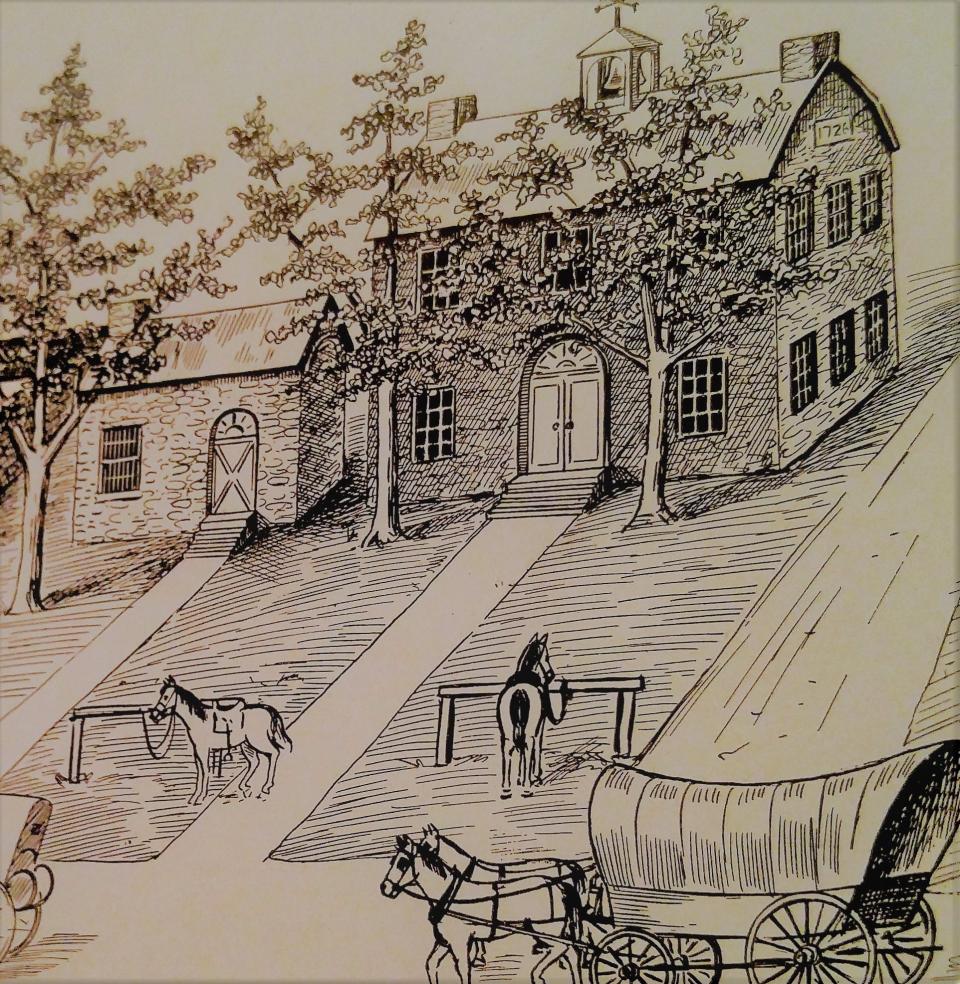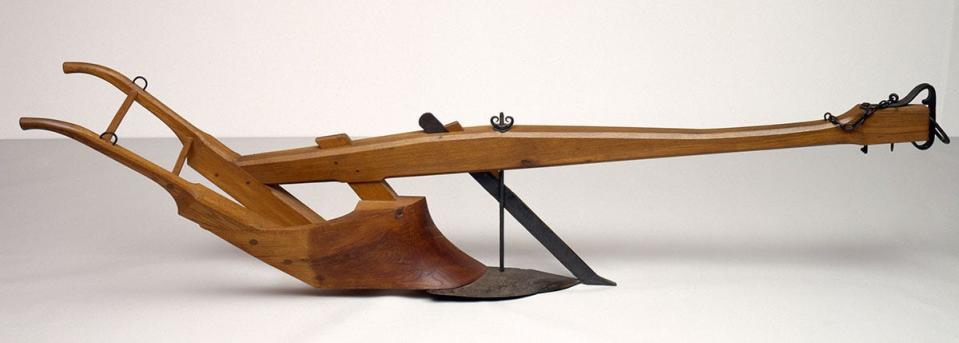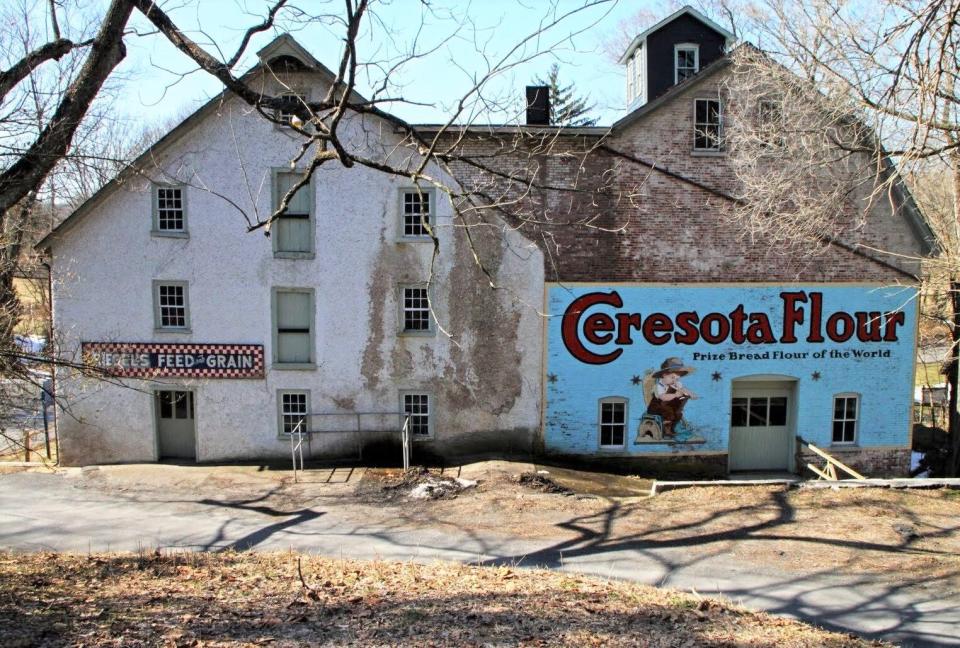The legend of Buckingham's 'Quaker Joe' Smith and news from the Durham Mill | LaVO
- Oops!Something went wrong.Please try again later.
We used to live on Anna and Charlie Simons’ horse farm on Holicong Road outside of Pineville. Mary Anne and I loved strolling the farm pastures with our orange tabby cat Spudg, a single-file line of horses following languorously behind.
The beautiful Buckingham countryside was intoxicating. We often biked from the farm to Wycombe following Smith Road. We didn’t give much thought to the name, other than it was unusual in the set of roads around it. Forest Grove Road. Swamp Road. New Hope Road. Lower Mountain Road.
Lately, I became curious about Smith Road. Historical records indicate it’s named for a Quaker farm family, particularly Joseph Smith, who was imprisoned during the American Revolution. Like other Society of Friends members, he refused to pay taxes to support the rebellion. Locked up, he conceived a means to revolutionize agriculture in the United States. It’s a tale worth sharing.

Let’s start at the beginning.
Joe’s great grandparents with their five children sailed from England to America in the late 1600s to escape religious oppression. The family sought a new life as farmers in William Penn’s Bucks County. Unfortunately, the parents died during the long voyage. The surviving children were absorbed by the growing Quaker community and founded generational farms in Makefield and Buckingham.
Joe’s grandfather Robert Smith was one of the most prominent men in Bucks, a respected Quaker preacher and longtime member of the colonial assembly. Joe was born in Buckingham in 1753, one of Timothy and Sarah Smith’s seven children, on the family farm near Pineville.
The 'Pine Street Hotel': The history of Bucks County's Doylestown jail turned Michener Museum
America's original outlaws: Why the legend of Bucks County's Doan Gang endures
Phillip's Mill: Inside Morgan Colt’s 'magical' Gothic English village, home to New Hope's famous art colony
During the American Revolution, many Quakers like Joe refused to take sides in accordance with their religious dictates of nonviolence. Declaring their neutrality, they resisted. That included paying taxes intended to support George Washington’s Continental Army.

In 1778, Joe faced was tried and sentenced to jail in Newtown. As the story goes, he had a talent for carving wood into various forms. His jailer allowed him to use a jackknife to whittle away the hours. In doing so, Joe came to a revelation about plows.
Like other farmers, Joe was bedeviled in the constant repair of wooden plows, a type that had been around for 5,000 years. A new kind was needed. His idea involved attaching a curved, durable cast iron plate to a wooden mold at the base of the plow. Called “moldboard plows,” Joe envisioned them easily slicing soil, folding it over to aerate the ground before planting. He slipped tiny carved models to his brother Tim, urging him to develop a prototype back home.
Once freed, Joe and Tim brought their design to fruition. Area farmers clamored for them. The brothers moved to a small village known today as Smithtown on the Delaware River in Tinicum Township, where cast iron from the Durham Furnace in Upper Bucks came down the river to markets in Trenton and beyond. In 1780, the two men began manufacturing their plows in a cluster of shops in the village.

The brothers advertised them widely, attracting the interest of Thomas Jefferson, elected the nation’s third president in 1801. He bought one that he popularized and further developed at his Monticello plantation. Historians down through the years have credited Jefferson with inventing it. But it was Quaker Joe who much earlier registered the design at the U.S. Patent Office in Washington. Unfortunately, the document was destroyed when British soldiers burned down the building in the War of 1812. Joe failed to renew the document, opening the way for others like John Deere to net a fortune on moldboard plows by 1837 in Grand Detour, Illinois.
When asked why he didn’t renew his patent, Joe shrugged, “Oh, it just would make a lot of Smiths wealthy.”
New improvements at historic Durham Mill
Speaking of Durham in Upper Bucks, progress is being made in restoring the Durham Mill in Upper Bucks, according to David Oleksa, president of the Durham Historical Society.
Lately, 40 refurbished windows have been installed in the iconic mill. In addition, a mechanism that once enabled the mill’s massive water wheel to rotate has been restored.

Two restoration grants are being used to improve internal lighting and make the visitor area more accessible and ADA compliant. Another grant has been applied for to create a museum-like visitor and student-focused experience.
“It is slow work, but we are patient and persistent,” Oleksa said.
The mill sits over a charcoal-fired blast furnace constructed in 1727 that produced iron products before the American Revolution and cannon balls during the war for rebel troops. Remnants of the furnace exist next to the towering 32-foot diameter waterwheel in the basement of the building.
The Durham Mill and Furnace is in the iron hills of a particularly beautiful section of Bucks County. Information can be found at durhamhistoricalsociety.org.
Sources include “The History of Bucks County, Pennsylvania: From the Discovery of the Delaware to the Present Time” by W.W.H. Davis published in 1905, and Science Direct’s “Moldboard Plow” on the web at www.sciencedirect.com/topics/agricultural-and-biological-sciences/moldboard-plows.
Carl LaVO can be reached at carllavo0@gmail.com
This article originally appeared on Bucks County Courier Times: Smith Road in Buckingham named for Quaker farmer, plow inventor

